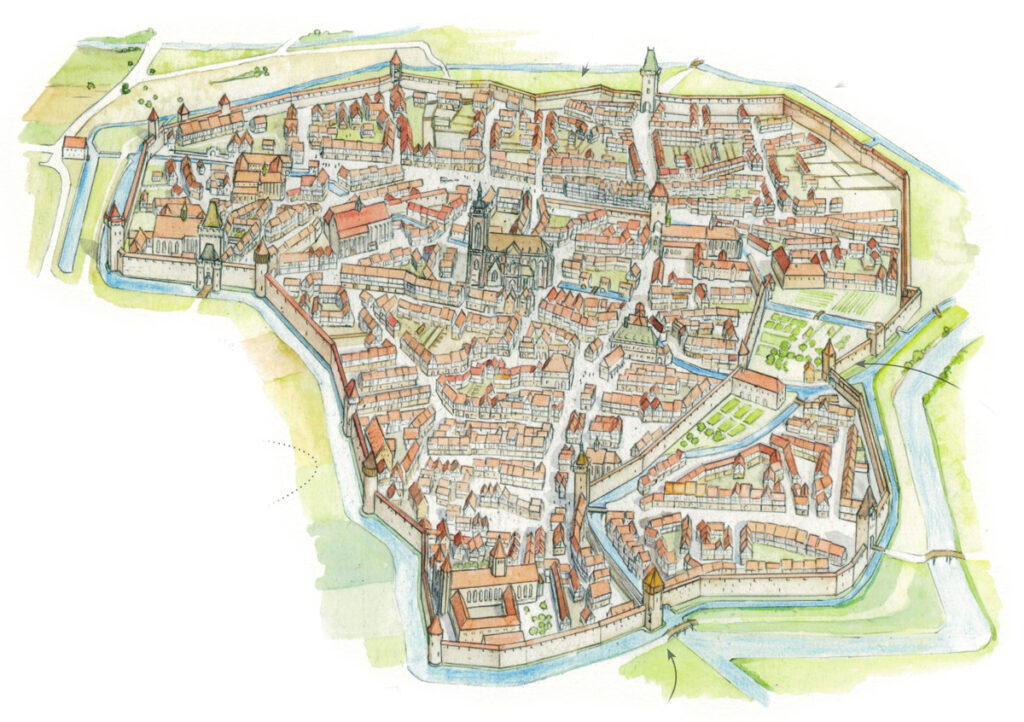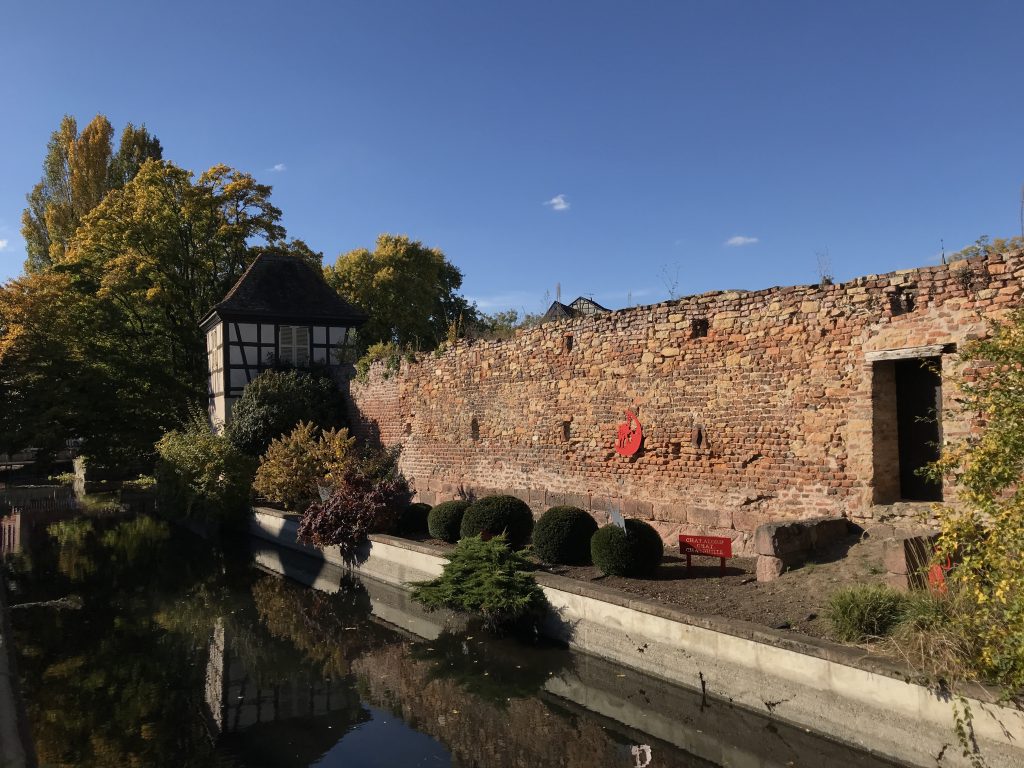
Colmar – the fortified city around 1500 AD. JC.
Reproduction from the Illustrated book: Fortified towns of Alsace and plain castles by Guy Trendel (Author), Christophe Carmona (Illustrations)
Publisher: ID Publishing; Illustrated Edition (April 1, 2016)
Buy the book on Amazon
The first written document mentioning Colmar is dated 823, when Louis the Pious donated an estate in the Columbarium area to the Abbey of Munster. The region was then probably occupied by a few farm estates. The town developed gradually and gained city status at the beginning of the 13th century, under the suzerainty of Emperor Frederick II of Hohenstaufen. It was at this time that various religious communities began to settle, such as the Franciscans, the Dominicans and the Augustinians.
In 1354, the Decapolis was born, an association of ten imperial cities of Alsace, which aims to defend the privileges and status of the cities of the Empire and to ensure their security. This league lasted until the French Revolution. It was also at this time that the domination of the bourgeois over the management of the city asserted itself to the detriment of the nobles. The 15th and 16th centuries are the city’s golden age. Magnificent buildings were built there and the city knew its fortune through its merchants, but also through its agricultural activity. The reform settled smoothly in Colmar in 1575. The Thirty Years’ War (1618-1648) caused great upheavals. It ruins the city, which then puts itself under the protection of Sweden, then of France. After the war, the city sought to regain its independence, but Louis XIV maintained his hold. Colmar had to give in and became a royal city in 1678 by the Treaty of Nijmegen, while keeping some of its privileges. The city is gradually becoming French…. The city continued to grow and became the Haut-Rhin prefecture. In 1870, the city and the region were ceded to Germany at the end of the war, before becoming French again in 1918. The city redid a passage under German domination during the Second World War.




